The Life of Death is a touching hand-drawn animation about the day Death fell in love with Life. After being well received on various animation festivals and being featured on the EYE film DVD of Selected Dutch Shorts it is finally online!

The Amateur's Guide To Death & Dying
Enhancing Life Near Death
By Richard Asa
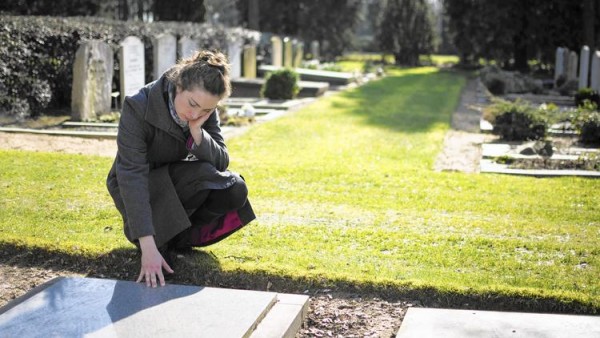
When you’re young, the distinct pain of grief may be felt with the loss of a beloved pet. Sometimes years go by, though, before a family member or close friend dies.
Losing someone close to you for the first time is overwhelming. The grief is an unexpected cascade of treasured memories intertwined with feelings of incomplete, unexpressed emotions. In “On Death and Dying,” author Elizabeth Kubler-Ross described the five stages of grief: denial, anger, bargaining, depression and acceptance.
Denial is the first stage that will hit you when someone you love dies. It opens the door to what is to come.
Kubler-Ross and David Kessler, in the book’s new edition “On Grief and Grieving,” explain that denial comes first to help you survive the loss. During this stage, “the world becomes meaningless and overwhelming. Life makes no sense. We are in a state of shock and denial. … We go numb.” Really, we just want to run away.
Denial must be met head on though, because it starts the grieving and healing process.
“Do your best to remain self-aware in the face of the emotions that will surge,” says Virginia A. Simpson, a Sacramento, Calif., bereavement care specialist and author of “The Space Between,” a book about caring for her dying mother. “Acknowledge that thoughts such as ‘I can’t handle this’ or ‘I’m not strong enough’ are just a story you are telling yourself.”
Expressing feelings, negative and positive, is important. “You can’t avoid the enormity of the situation,” says Judy Rosenberg, a Los Angeles-based clinical psychologist. “Along with the death of a person comes the death of precious memories and feeling of incomplete, unexpressed emotions. … Expression allows you to heal and move on.”
Spiritual counselor Audrey Hope said she walked in circles at her office for hours after receiving news of her sister’s sudden death. She then expressed her rage and grief by lying on a table and screaming off and on for three hours, she said.
If you are able, being at the bedside of a dying friend or family member can help blunt the pain of denial. Although the paradox of denial is that it can keep you from being there, being part of the dying process can help you through the other stages and lead you toward acceptance.
“Because most people are intimidated by the dying process, they tend to leave the bedside before they have said their final goodbyes,” Rosenberg said. “When death is not appropriately grieved, you bear the burden of feeling incomplete. This sense of incompletion can show up as guilt, nightmares and a general feeling of suppressed emotions.”
The unexpected loss of someone you love calls for true courage. Chicago therapist David Klow believes that while many people might shrink from the unexpected experience, they would benefit by remaining open to it and “leaning into the feelings.”
“Rather than fighting through the feelings, it helps to stay with them and let the feelings guide how you might say goodbye,” he said. “Most people worry they will become too overwhelmed by emotions (but) being able to feel what we are going through in the moment actually allows for a healthier grieving process.”
To help prepare them for the loss of a loved one later, kids can benefit from learning about loss not related to death early on. Learning how to deal with leaving one school for another, losing a friend who moves away or breaking an object that had special meaning can help create understanding of grief.
“Those experiences help us learn to cope with a loss,” says Kriss Kevorkian, a Los Angeles-area thanatologist, a person who studies death and dying. “When losing a loved one for the first time, the best thing to do is ask (yourself) how you coped with other losses in your life.”
“In our society, we’re often told to ‘get over it,’ which is just about the worst advice ever,” she said. “Sit with your grief, find the meaning in it through appreciating that fact that you have loved ones that you care for.”
There’s no way to avoid grieving, Kevorkian says. It will come no matter how much you try to resist. “Allow it to unfold,” she says. “Grief … teaches us to appreciate life and those we love. Instead of pushing it aside, embrace it and learn to truly be grateful for every day.”
Simpson, the bereavement care specialist, offers this advice when you are at the bedside of a loved one who is dying:
1. Consider that being present at the end of someone’s life is a sacred honor, a privilege and a gift.
2. Accept that you may be scared and that it’s OK.
3. To alleviate your own fear, focus your attention on the person you love. Touch them, speak to them, sing to them, thank them.
4. Don’t worry if you cry.
5. Don’t be concerned about knowing the right thing to do. There is no single right thing. Just show up, pay attention, tell the truth and don’t be attached to the outcome.
Complete Article HERE!
It was five days after Teresa Van Deusen’s sister died when the letter from American Express arrived, offering condolences. How they knew her sister had died was a mystery—Van Deusen never called to inform them, and they hadn’t made any changes on her account. But there it was, a letter expressing sympathies, and also reminding her of the $16,000 in credit card debt her sister owed.
When someone dies, his or her debt doesn’t disappear. His or her remaining assets get pooled together, and then a probate court doles out payments to cover any remaining debts: First the mortgage; then other secured debts, like car loans; and then, if there’s any money left, unsecured debt, like credit cards. If, say, you’re set to inherit the family house but your parents die with debt that their other assets couldn’t cover, a court can force you to sell the house in order to pay off the debts. Most Americans who have debt don’t die with a ton of money or assets leftover, and credit card companies clamber to get to the estate first, since when that money gets paid off to other agencies, the debt goes away.
Credit card companies have two options: Pursue the debt, or chalk it up as a loss to get a tax credit. For example, Van Deusen’s sister had about $5,000 outstanding on her credit card with Wells Fargo, but the bank chose not to chase it down. “They sent a letter that said, ‘We’re declaring this as a loss, and we’re sorry for your loss,’ and [sent us] a 1099-C”—a form Van Deusen would need to pay taxes on the canceled debt. But plenty of other collectors take other strategies.
“Collecting the debts of the dead—particularly the unsecured debt, like credit card debt—is a pretty good racket,” said Oliver Bateman, a former debt collector who wrote for us last year about his demoralizing experience in that job.
The Fair Debt Collection Practices Act prevents collectors from making threats, calling too many times, harassing family members, or using deception in the pursuit of collecting debt. But collectors can contact family members of the deceased in order to reach the administrator of the estate. Some companies take it one step further, trying to squeeze money out of relatives or friends, even though they have no legal obligation to repay the debts of the person who’s died. (The only time a creditor can legally collect from a family member is if someone has co-signed on a loan or if he or she is the debtor’s spouse and live in a community property state.)
Michelle Dunn, a consultant for the debt collection industry who literally wrote the handbook on debt collection, says this kind of thing “happens every day.”
“Some bill collectors will talk to anybody in the family and try to get them to pay a bill. They’ll say it’s their ‘moral obligation,’ which is absolutely false,” Dunn said. “But people are not educated on what their rights are, and if they’ve just had a death in their family, they’re upset. So when a bill collector tells them something like this, they might be more likely to believe it [and agree to pay the debt].”
Bateman told me about a colleague who used a legal research database to track down addresses of next-of-kin, sent those relatives threatening letters about an owed amount, and then persuaded people there was a “moral obligation” to pay it. “A few times, we got payment in full from the kids or other relatives of these people. It was truly breathtaking,” Bateman said.
The Social Security Administration gives notice to financial institutions a few months after someone dies, but debt collectors usually find out much sooner by using databases to track recent deaths. Dunn, who was a bill collector herself before she became a consultant, told me she always read the newspaper obituaries to see if anyone she needed to call had died. “There used to be a newspaper—I’m sure it’s online now—where you could pay for a subscription and see, state by state, the people who have died that day,” she said.
As these online tools become easier to use, collection companies are increasingly more likely to pursue the debt of dead people, one way or another. There are plenty of horror stories: A woman in Hawaii sued Bank of America collectors, after she says they called upwards of 48 times a day just after she received her husband’s life insurance check. (There’s no obligation to use life insurance to pay off debts, unless the deceased person named his or her estate the beneficiary of his or her life insurance money, in which case it gets divided up with the other assets.) Another woman said she was harassed by collectors for five years about her dead sister’s debt, to the point where she moved and changed her phone number multiple times. The collection agency Rumson, Bolling & Associates was sued in 2011 after harassing debtors’ family members, co-workers, and neighbors, as well as threatening to “desecrate the bodies of deceased relatives” if they failed to pay off funeral bills. The company was eventually banned by the Federal Trade Commission from the debt collection business.
But the worst cases are sometimes people who think they’re doing the right thing by informing a bank, loan, or credit card company that the account holder has died, and then get manipulated into paying the debt.
“Someone will call and say, ‘I’ve been going through my uncle’s mail because he’s passed away and I see you’ve sent this letter that he owes some money, and I’m calling to tell you he’s dead,'” said Dunn. “Some bill collectors will then tell them to pay that bill, and they don’t know they don’t need to, so people pay it.”
Van Deusen, who was the administrator of her sister’s estate, estimates that she spent more than 50 hours on the phone with collectors from BBVA bank, and even more with other credit card companies, which she described as “endless, persistent gas lighting.” She was never asked to pay her sister’s debt out of her own pocket, but she says collection agents tried to get the estate to pay off debts that weren’t even real—including nearly $7,000 in fees that were issued post-mortem, and debts that had already been written off. “Death and taxes, sure,” she said, “but dead people shouldn’t be paying debt that the credit card companies have already written off.”
Van Deusen also battled numerous calls from a third-party collection agency that claimed they had purchased her sister’s American Express debt and demanded money from the estate. “I said, ‘Show me a contract.’ Any evidence this was her debt. In the year we were negotiating, they just never produced that.”
Many collection agencies, including the one where Bateman worked, pay employees based on how much debt they collect, which can motivate collectors to squeeze every last dollar out of a family—whether it comes from the dead person’s estate or otherwise. I asked Bateman if he ever felt compelled to bully a debtor, or a family member, in order to earn higher commission. “Sure, all the time,” he said. “Sometimes, I’d have an argument with a particularly sassy debtor who wasn’t going to pay me any money, just because it was fun to do.”
“It’s a recipe for someone to push the limits and break the law because he or she is desperate trying to get these people to pay,” said Dunn. “It’s setting them up to do something wrong.”
Complete Article HERE!
By  Alex Janin
Alex Janin
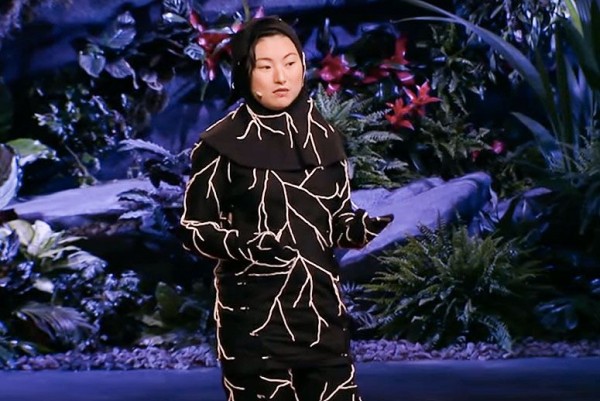
With the rise of electric cars, sustainable architecture, eco-friendly diets, composting, and countless other options, forging a sustainable life is often as easy as it is trendy. Now it’s even easy after death thanks to a bodysuit made from a decidedly old-school material: mushrooms.
The Infinity Burial Suit, a one-piece garment designed to be worn in the afterlife, is sewn with mushroom spore–infused thread. Although researcher Jae Rhim Lee debuted the idea in a 2011 TED Talk, her New York–based company, Coeio, only recently announced that the suit will be available for purchase midway through 2016. The pet option—which is a sack rather than a suit—is projected to go on sale March 1, the cofounder of Coeio, Mike Ma, told TakePart.
The suit also comes with an environmentally friendly embalming fluid and a mineral applicant made of mushroom spores. The two are supposed to be applied directly to the body to work in tandem with the suit to speed up the decomposition process.
Ma believes there are three benefits to this. “This technology speeds the return to earth through decomposition, it remediates toxins we accumulate over a lifetime, and it speeds nutrient delivery back to plants,” he said.
In her 2011 TED Talk, Lee touched on this, pointing out that “our bodies are filters and storehouses for environmental toxins.” Lee and Ma’s goal is to eliminate these toxins in a sustainable way.
Their method may seem a little morbid, but it has environmental advantages. Burial, the most popular choice for Americans, usually involves the use of a casket—which pulls from the earth’s wood and mineral resources—and toxic embalming fluid.
In the U.S. alone, 30 million board feet of casket wood is used annually for burials, according to Scientific American. Similarly, the U.S. uses 800,000 gallons of embalming fluid, traditionally used to preserve a body rather than allow it to decay, each year. The toxic fluid contains a known carcinogen—formaldehyde—that leaches into the soil following burial. Cremations aren’t much better, emitting 246,240 tons of carbon dioxide into the atmosphere per year from the U.S., says the Funeral Consumers Alliance.
The mushroom suit takes a load off more than just the environment. It will sell for about $999, said Ma—significantly less than the $7,181 the average funeral cost in 2014 and less than the $6,087 average expense of cremating a body.
Although the mushroom suit provides a cost-effective alternative, the goal is to do so without losing the beauty of the process. The suit itself is a work of art thanks to designers such as Daniel Silverstein, who has designed clothing for Jennifer Hudson and Kristen Bell.
“We still care a lot about the ceremony and fashion, so it can still be beautiful,” said Ma.
Ma, whose grandparents died last year, shared his personal experience with the funeral-planning process. “I was heavily involved in the logistics, and I kept thinking, ‘Oh, my God, I’m making a lot of terrible decisions as a businessperson, and at the same time, I’m so emotionally overwrought with what’s going on,’ ” he said.
Ma hopes the suit will help launch conversations about death and reshape the idea from “scary” to something everyone experiences.
“Our products really help people think about their deaths in congruence with how they live their lives. When people do that, they stand a chance to live life better,” he said.
Complete Article HERE!
BY RICK PAULAS
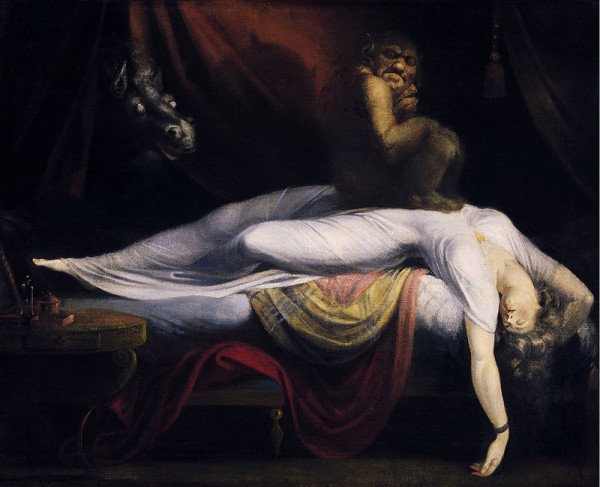
Before you are even fully awake, your heart is racing.
You wanted to take a brief “power nap,” not to fall into a deep slumber. Before you gather the nerve to look at the clock and see how much time you’ve wasted, you consider the schedule gymnastics you’ll have to perform now because of the sleep mishap. It’s not going to be pretty.
But when you look, only a few minutes have passed. All those dreams, the entire world your subconscious built, was erected and demolished in a relative blink of an eye.
This is a temporal quirk in the part of sleep known as hypnagogia, when the brain makes its clumsy transition between wakefulness and sleeping, when all sorts of weird stuff happens. It’s also a state of mind tied to other times when humans are on the precipice between the unconscious and the conscious—even life or death.
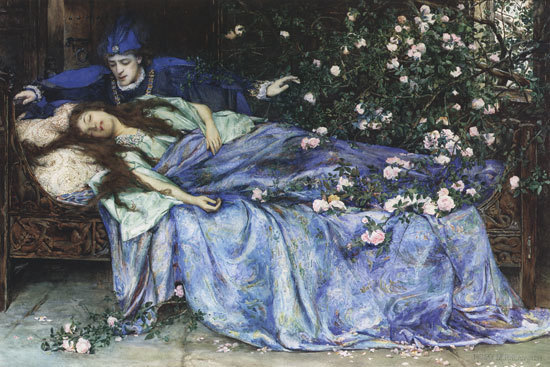
So, what goes on during this eerie state? A 2015 investigation by Cambridge researchers explains the hallucinatory feeling of hypnagogia like so:
The complexity and intensity of hypnagogic imagery can range from vague and fleeting impressions to fully formed images or even hallucinated dreams, and the most common forms of hypnagogic images are visual, auditory, and bodily experiences. […] [O]ther types of hypnagogia may include awareness of sleep onset, distorted perception of space, and time, as well as linguistic alterations.
This process is not always benign. The hypnagogic state’s also responsible for the “invisible presence” felt during episodes of sleep paralysis, recently brought into the mainstream with the documentary The Nightmare. Its cousin “night terrors,” meanwhile, occurs in a deep REM phase of the sleep cycle.
Hypnagogia is also the state in which lucid dreaming, that moment when the dreamer becomes aware of the state they’re in and takes control of the wheel, can occur. In 1985, Stanford professor Stephen LaBerge published the first scholarly treatise, Lucid Dreaming, wherein he spends an entire chapter explaining the strangest quirk of lucid dreaming, the out-of-body experience:
A person having an OBE may for example find his sense of identity apparently associated with a second, non-physical body—a “soul,” “astral body,” “spirit,” or, to suggest a term having a certain charm, “out-of-body body” (OBB)! Equally, while “out-of-body”, one may entirely dispense with the inelegance of bodies of any sort, and experience oneself as a point of light or a freely mobile center of awareness.

These OBEs are also a trait of another piece of neurological weirdness: Near-death experiences (NDE).
Defined in 1975 by Raymond Moody, NDEs are “any conscious perceptual experience which takes place during an event in which a person could very easily die or be killed, but nonetheless survives, and continues physical life.” That seems fairly straightforward but what actually is felt during these NDEs where things get freaky. There are white lights, and tunnels, and communing with the dead. But also among Moody’s list of 15 “common elements” that recur in adult NDEs are “hearing unusual noises” and “being ‘out of body’.” And there we have our overlap.
Lucid dreams, which occur in the hypnagogic state we all experience, occasionally features the feeling of being outside of one’s body. And near-death experiences feature these same feelings of being outside of one’s body. So, is there a relationship between the two?
Kevin Nelson, professor of neurology at the University of Kentucky, believes so. In a 2011 interview with the Guardian, Nelson points towards a common element that links all near-death experiences together—the fact they’re occurring to a person that’s just almost died. That kind of stress can play havoc on one’s body, and brain. “If blood flow to the brain is threatened in some way one of the brain’s crisis reactions has to do with a consciousness switch,” Nelson told the Guardian. “What we found in subjects who’ve had near-death experience is that instead of moving smoothly from waking to REM consciousness, their brain switch is more likely to blend these two conscious states together.

If Nelson is correct, and NDEs occur because of a short circuit in the brain, and we can know which area is short-circuiting, well, the effect can be replicated in the lab. And, it has. In 2002, Olaf Blanke at the Laboratory of Cognitive Neuroscience in Switzerland reproduced the feeling of OBEs by using specifically-placed electrodes to disrupt temporal pariental regions in the brains of study participants. Essentially, Blanke flipped a switch and the participant felt as if they were out of their body.
So, case closed? We found the component that can be tweaked and NDEs are somehow connected to our normal sleep cycle? Well, not entirely.
“All the evidence I’ve seen is that Kevin Nelson is wrong,” said David Hufford, professor at Penn State College of Medicine, who’s been studying sleep paralysis since the 1970s. “There is no significant connection between sleep paralysis and near-death experiences. For starters, phenomenologically they don’t look anything alike.”
What he means is that while some aspects of the two experiences may take part in the same area of the brain, there are enormous differences in the emotional content of each state. “Sleep paralysis is accompanied by a threatening figure in the room,” said Hufford. “They hear footsteps, it comes over, it presses on them, it makes them short of breath, stuff like that.” This is in pretty direct conflict with the quite pleasant feeling that comes after someone experiences NDE. (In fact, Moody’s list of 15 NDE elements also includes “feelings of peace and quiet,” “experiencing a realm of bewildered spirits,” and “elimination of fear of death.”)
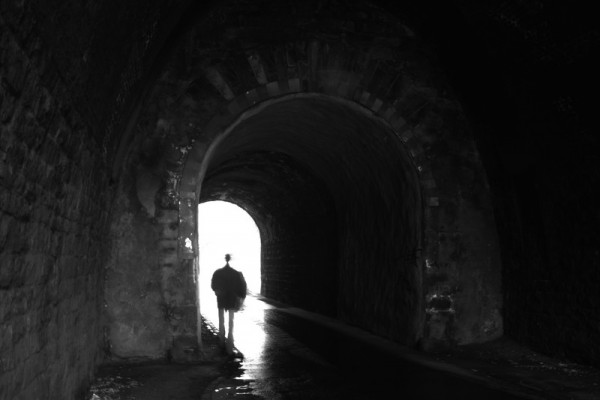
Perhaps more damning is that various studies have shown there’s no correlation between the people who experience sleep paralysis and the people who have NDEs. If both events were caused by the same body processes, there should be some level of crossover in the people experiencing them. But, according to Hufford, there is none, which pokes holes in Nelson’s theory that NDEs being caused by a breakthrough from the sleep cycle.
To Hufford, suggesting a link between NDEs and sleep isn’t an inconsequential mistake, but rather a huge misstep with important ramifications. “I have a missionary zeal about this because the psychiatric stigma attached,” said Hufford. “It’s very important we start to have a more intelligent attitude towards NDEs.” It’s important, he continued, to not to just call people who claim to experience this “crazy” as a way of ignoring their stories. When it comes to pinpointing what is going on between conscious and unconscious states, humans can’t seem to fully wake up.
Complete Article HERE!
By Ann Neumann
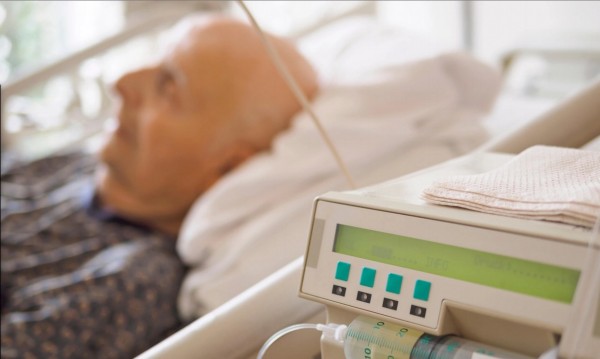
Several factors have made politicians, particularly at the national level, reluctant to wade into the aid-in-dying conversation. Catholic leaders and their evangelical “pro-life” allies have eviscerated any politician willing to discuss aid in dying, shutting down dialogue and branding advocates as “pro-death”. By claiming to represent American religions, these vocal opponents have bifurcated the issue along political lines, all but silencing those who are religious but disagree.
Yet a conversation is taking place, with or without the presidential candidates. Since the 1970s, when physiological support, like respirators and defibrillators, made it possible to prolong life, prolonging death has fueled a more subtle conversation about what medical decisions patients and their families can make. Aid in dying is now approved by 68% of Americans, a number that rose by a striking 10 points in the course of a year, according to a Gallup poll conducted in May 2015. It’s now legal in five states with at least a dozen more considering bills or legislation.
Still, the issue was absent from the presidential race until a terminal cancer patient finally asked a question last week. Jim Kinhan, an 81-year-old with a face as rosy as his sweater, asked Hillary Clinton at a New Hampshire town hall meeting on 3 February about her position on the legalization of aid in dying.
“I wonder what leadership you could offer within an executive role that might help advance the respectful conversation that is needed around this personal choice that people may make, as we age and deal with health issues or be the caregivers of those people, to help enhance and – their end of life with dignity.” His voice was raspy, his question respectful. The Washington Post reported that Clinton “looked a bit nervous”. After a slight pause and some careful word selection, Clinton failed to take a position.
Republican candidates have also been silent about aid in dying, but it’s difficult to imagine anyone in the current conservative field will step away from the Republican party platform as they vie for traditionally Republican social conservatives. The campaign of Jeb Bush and his role in the Terri Schiavo case have even worked against the cause, helping to refresh patient concerns regarding autonomy in a way that defies party lines and past reticence.
But, unlike the fight to end abortion, which has (wrongly) focused on women’s sexual decisions and succeeded in shaming female medical choices, aid in dying is an issue that addresses male choice. That gender difference – and the fact that Republican voters skew older than Democrats – could catch up with the party and its candidates in the future. Republicans would do well to pay attention.
New Hampshire, where Kinhan lives, is home to one of the oldest populations in the country, and legislators there have tried twice in the past to establish study committees. Both times governor Maggie Hassan has vetoed the proposals. This year, as Hassan prepares to leave office, a Concord senator has tried again, introducing SB 426. It’s spurring the kind of dialogue in the state that Kinhan was hoping Clinton’s national campaign could get behind.
In the past, the very terms used to describe aid in dying have proven controversial. For more than a decade, polls showed that approval ratings depended on how questions about aid in dying were asked. If the term “assisted suicide” was used when polling, those willing to claim support for the laws were fewer. But that has begun to change; voters, exposed to repeated state-level conversations about aid in dying, and who now see that the laws have succeeded in the “laboratory of the states”, have come to understand that “assisted suicide” is not “suicide”. It is not something our culture should be united in preventing.
In an op-ed for the Concord Monitor at the end of January, Kinhan addressed the contrast between aid in dying and suicide. “The transparency and shared process of end-of-life choice is in strong contrast to the behavior known as suicide,” he wrote, emphasizing the difference between choosing not to suffer from a terminal disease and choosing to end one’s life out of despair.
“This choice is not dark and secretive,” Kinhan continued. “Personally, it rings loudly and joyfully of my readiness for what lies ahead and for thankfulness for what life has gifted me.”
Compassion & Choices, the nation’s largest aid in dying organization, has announced a call for questions for candidates. They will host an event on 17 February that gives voice to seniors who have concerns about end-of-life care. Hopefully candidates will realize what Kinhan and the movement to legalize aid in dying have shown: it’s time for a national conversation.
Complete Article HERE!
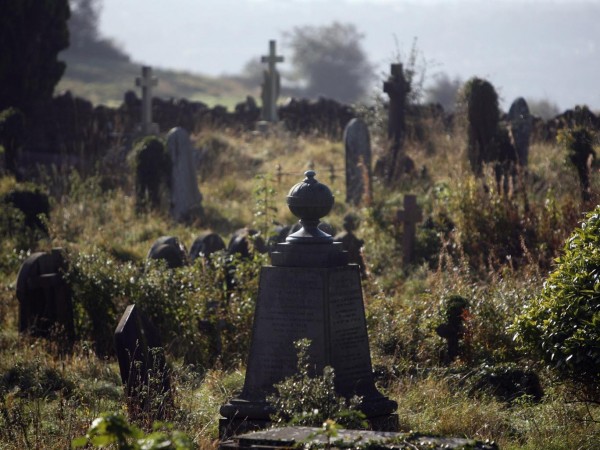
If death is the final taboo, it might not be for much longer. There has, in recent years, been increasing effort to promote conversations about death and dying, both in the home and in more public settings. For example, death cafes, first launched in Switzerland in 2004, have spread around the world, enabling people to speak about their fears over cake and coffee.
Our reluctance to talk about death is often taken as evidence that we are afraid, and therefore suppress thoughts about it. However, there is little direct evidence to support that we are. So what is a “normal” amount of death anxiety? And how does it manifest itself?
Judging by studies using questionnaires, we seem more bothered by the prospect of losing our loved ones than we do about dying ourselves. Such studies also show that we worry more about the dying process – the pain and loneliness involved, for example – than about the end of life itself. In general, when we are asked if we are afraid to die, most of us deny it, and report only mild levels of anxiety. The minority who report high levels of death anxiety are even considered psychologically abnormal – thanatophobic – and recommended for treatment.
On the other hand, our tendency to report only low levels of death anxiety might be a result of our reluctance to admit to our fear, to others and ourselves. Based on this hypothesis, social psychologists have, for almost 30 years now, examined the social and psychological effects of being confronted with our own mortality. In well over 200 experiments, individuals have been instructed to imagine themselves dying.
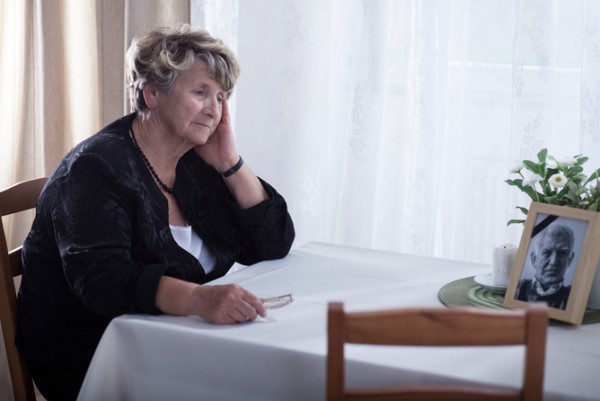
The first study of this kind was conducted on US municipal court judges, who were asked to set bond for an alleged prostitute in a hypothetical scenario. On average, judges who were confronted with their mortality beforehand set a much higher bail than those who were were not confronted – $455 versus $50. Since then, many other effects have been found among groups including the general population in many different countries.
Besides making us more punitive, thinking about death also increases our nationalistic bias, makes us more prejudiced against other racial, religious and age groups, and leads to other such parochial attitudes. Taken together, these dozens of studies show that being reminded of death strengthens our ties to the groups we belong to, to the detriment of those who are different from us.
Reminders of death also affect our political andreligious beliefs in interesting ways. On the one hand, they polarise us: political liberals become more liberal while conservatives become more conservative. Similarly, religious people tend to assert their beliefs more fervently while nonreligious people disavow more.
On the other hand, these studies have also found that thinking about death tempts us all – religious or otherwise – towards more religious belief in subtle, perhaps unconscious ways. And when the reminder of death is sufficiently powerful and when participants are not mindful of their prior political commitments, liberals as well as conservatives tend to endorse conservative ideas and candidates. Some researchersclaim that this could explain the US political shift to the right after 9/11.
But why does the prospect of death make us more punitive, conservative and religious? According to many theorists,reminders of death compel us to seek immortality. Many religions offer literal immortality, but our secular affiliations – such as our nation states and ethnic groups – can provide symbolic immortality. These groups and their traditions are a part of who we are, and they outlive us. Defending our cultural norms can boost our sense of belonging and being more punitive against individuals who violate cultural norms – such as prostitutes – is symptom of this.
Consistent with this interpretation, researchers have also found that reminders of death increase our desire for fame and for children, both of which are commonly associated with symbolic immortality. It turns out that we do want to be immortalised through our work and our DNA.

When asked, we do not seem, perhaps not even to ourselves, to fear death. Nor would we guess that thinking about death has such widespread effects on our social attitudes. But there are limits to our introspective powers. We are notoriously bad at predicting how we will feel or behave in some future scenario, and we are similarly bad at working out why we feel the way we do, or evenwhy we have behaved a certain way. So, whether we realise it or not, it seems that to bring death to the surface of our minds is to open Pandora’s box.
So what should we make of these new efforts to demystify death and dying through conversation? It is hard to say. Increasing death’s profile in our imaginations, private and public, might make us all more punitive and prejudiced, as the research found. But then perhaps we get these negative effects precisely because we are unaccustomed to thinking and talking about death.
In exposure therapy, carefully exposing patients to the source of their anxiety – an object, an animal, or even a memory – reduces their fear. In the same way, perhaps this most recent taboo-breaking trend will inoculate us psychologically, and make us more robust in the face of death.
Complete Article HERE!